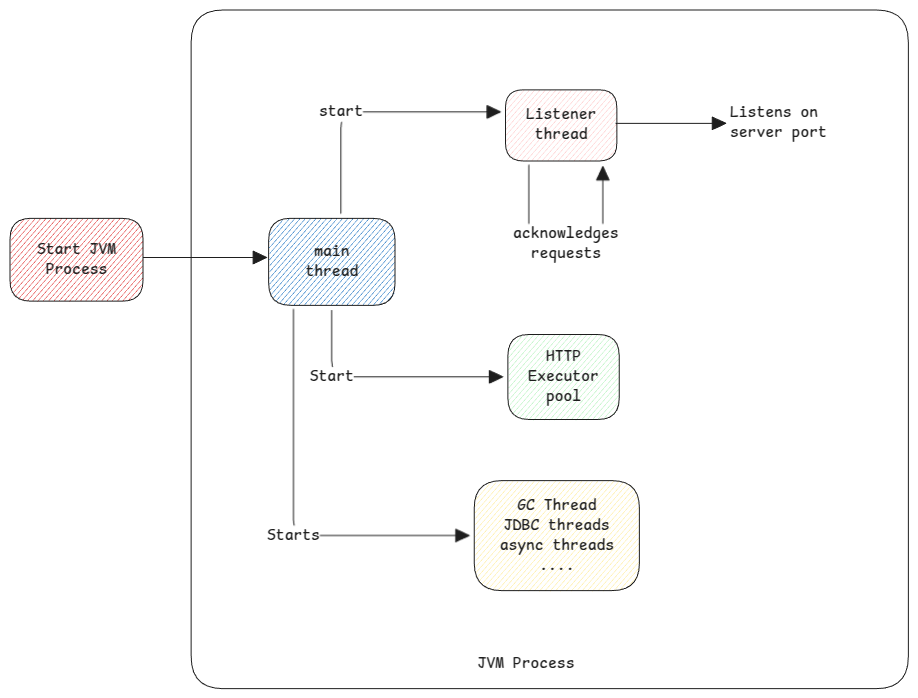Asynchronous Servlets
Asynchronous servlets aren't same as NIO. In NIO, it's about only ensuring the servlet thread pool isn't fully blocked waiting for the data to come-in. Where as in asynchronous servlets are servlet thread itself is released after accepting the request and the response is sent back with a new servlet thread from the pool.

The entire processing consists of 3 threads.
- Request servlet thread - Accepts the request from client and hands over the asynchronous thread.
- Asynchronous Processing thread - Which does the actual processing of the request.
- Response servlet thread - Write the response back to client.
It's important to understand that the request servlet thread sends a callback method to asynchronous thread. The callback method which is on a different master thread is then called by asynchronous thread when the processing finishes and then the master thread places a task for the servlet thread pool to pickup the send response to the topic.
Example of asynchronous servlet is the Spring's DeferredResult implementation.
There is no difference of the HTTP clients. The socket in which the request came in will remain connected. It will remain connected until the timeout period.
Thread Creation
The main threads created listener and worker threads at the boot.

Non-Blocking IO
The term non-blocking IO means, the process which is polling the machine's IO system for data isn't being blocked when a request is processed.
In case of HTTP threads, they're 1:1 mapped with CPU threads. So blocking an active CPU thread waiting for any response is expensive. Instead, the HTTP thread is released so that it can process other waiting IO requests is more scalable.
Port vs Socket
Port is a network property.
Where as socket is how a network connection is expressed in software. Best explanation - UNIX socket is (in code) a data structure (or object) that you can use to send or receive data. This object has two queue fields. One for incoming data and one for outgoing data.